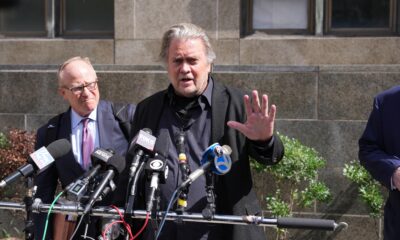Germany Announces Major Military Aid Boost

Germany commits €11 billion in military aid to Ukraine through 2029, as European allies step up support while questions remain about America’s role in the conflict.
At a Glance
- Germany and allies have pledged a record €21 billion in new military aid to Ukraine
- Germany’s €11 billion package includes guided missiles, radar systems, artillery ammunition, and reconnaissance drones
- Peace remains “out of reach” according to German Defense Minister Boris Pistorius despite diplomatic efforts
- European nations are assuming greater responsibility amid uncertainty about future U.S. military support
- U.S. special envoy Steve Witkoff was sent to Moscow for possible discussions with President Putin
Europe Steps Up as U.S. Role Shifts
Germany has announced an unprecedented €11 billion military aid package for Ukraine as part of a larger €21 billion commitment from Western allies. The announcement came during a Ukraine Defense Contact Group meeting at NATO headquarters in Brussels, co-hosted by Germany and the United Kingdom.
This significant financial pledge represents a major shift in Europe’s defense posture, with continental powers taking greater responsibility for regional security amid changing dynamics in Washington. The aid will extend through 2029, providing Ukraine with long-term support in its ongoing conflict.
The United States’ role has notably shifted, with Defense Secretary Pete Hegseth participating only via videolink rather than leading the contact group as American officials had previously done. Ukrainian Defense Minister Rustem Umerov emphasized that despite this change, the U.S. remains a “prime partner” in Ukraine’s defense against Russian aggression.
The Trump administration has promised to end the war quickly, but European officials have expressed concern about potential changes to American security commitments in Europe, prompting this more assertive European stance.
Comprehensive Military Support Package
Germany’s €11 billion aid package includes a comprehensive array of military equipment and capabilities: guided missiles, artillery ammunition, reconnaissance drones, advanced defense systems, and additional surveillance radars.
The United Kingdom has simultaneously pledged £4.5 billion in support, with an immediate £450 million allocation for repairs and maintenance of vehicles and equipment, radar systems, anti-tank mines, and drone technology. These coordinated commitments represent one of the largest single infusions of military aid to Ukraine since the conflict began.
“Given Russia’s ongoing aggression against Ukraine, we must concede (that) peace in Ukraine appears to be out of reach in the immediate future. We will ensure that Ukraine continues to benefit from our joint military support,” said Boris Pistorius, German Defense Minister.
Officials noted that Germany cannot provide additional Patriot air defense systems to Ukraine at this time due to pending deliveries and existing commitments. Nevertheless, the combined European commitment demonstrates a significant escalation in support intended to strengthen Ukraine’s battlefield position. The EU and its member states have now committed over €23 billion in military aid to Ukraine this year alone, showing Europe’s determination to counter Russian aggression regardless of potential U.S. policy shifts.
Diplomatic Efforts Amid Ongoing Hostilities
Despite the massive military aid package, diplomatic efforts continue in parallel. The United States has dispatched special envoy Steve Witkoff to Moscow, though it remains unclear whether he will meet directly with President Putin. A U.S.-proposed 30-day ceasefire has reportedly been accepted by Ukraine but not yet by Russia. British Defence Secretary John Healey has accused Putin of deliberately delaying meaningful ceasefire negotiations while Russian forces continue offensive operations.
“Putin said he wanted peace, but his forces continue to fire on Ukraine, military and civilian targets alike,” said John Healey, UK Defence Secretary.
The conflict shows no signs of abating. Ukraine reported that Russia recently launched 39 drones and one ballistic missile, with most being intercepted or neutralized by Ukrainian defenses. Meanwhile, Russia’s spy chief Sergei Naryshkin indicated ongoing discussions with the U.S. about potential prisoner swaps following a recent exchange.
A coalition of willing nations is planning peacekeeping efforts focused on air and maritime support, highlighting the complex military and diplomatic landscape as the war approaches its third year with no clear resolution in sight.
























